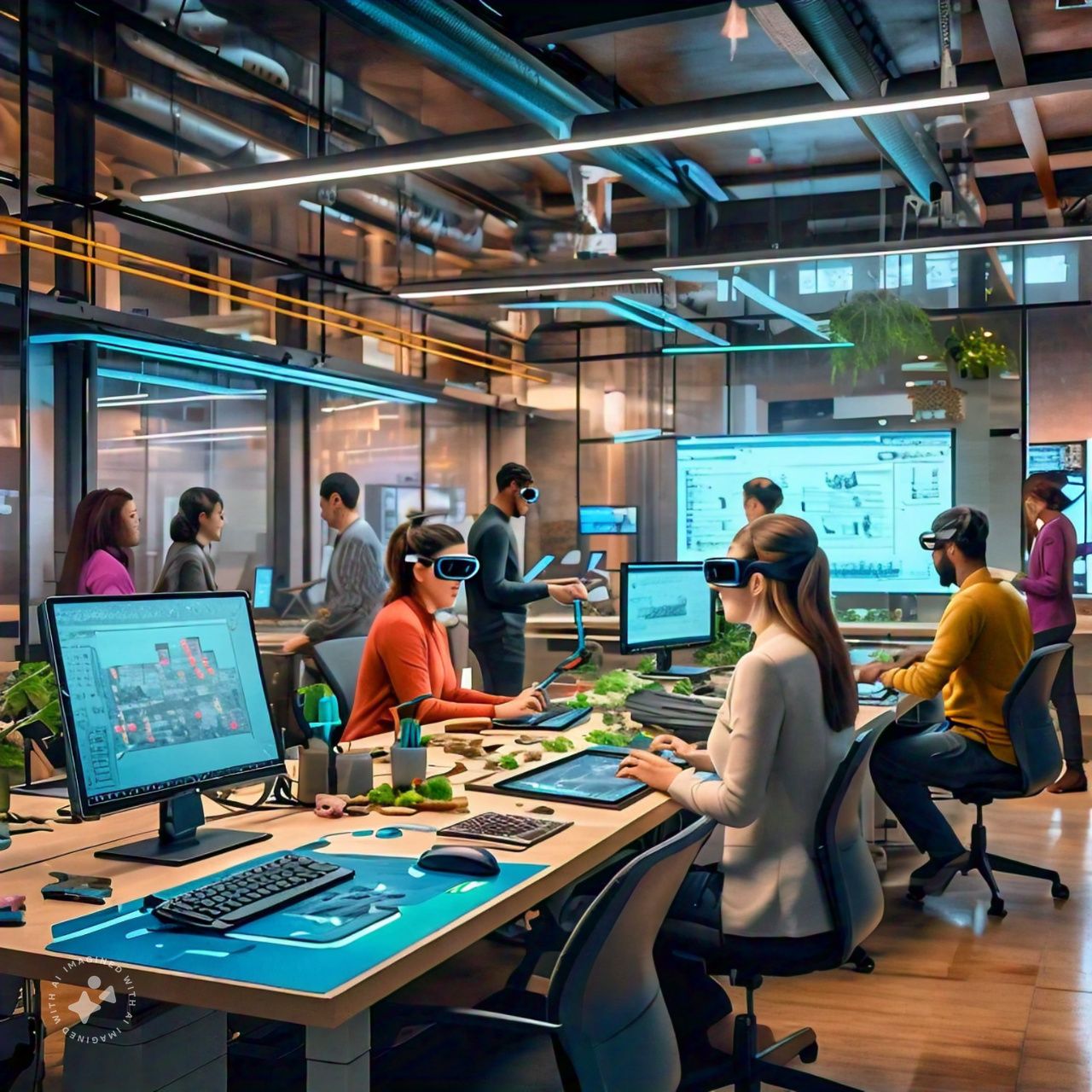Robotics: Transforming Industries from Manufacturing to Healthcare
Robotics is no longer a futuristic concept limited to science fiction; it is an integral part of modern industries, driving innovation, improving efficiency, and transforming various sectors. From manufacturing to healthcare, robotics is reshaping the way industries operate, enhancing productivity, and creating new possibilities for human-robot collaboration. This article explores the role of robotics in transforming industries, highlighting its impact on manufacturing, healthcare, and beyond.
1. Robotics in Manufacturing: Efficiency and Precision
The manufacturing industry has been at the forefront of robotics adoption for decades. Automated systems, powered by robotic arms, are now ubiquitous in factories around the world, revolutionizing production lines and assembly processes. The benefits of robotics in manufacturing extend far beyond simple automation, offering unprecedented levels of precision, speed, and safety.
Increased Productivity
Robots excel at performing repetitive, labor-intensive tasks with speed and consistency. Unlike human workers, robots do not tire, allowing them to work 24/7 without a drop in performance. This constant output leads to higher productivity and shorter production cycles, helping manufacturers meet growing demand with greater efficiency.
Precision and Quality Control
Robotic systems are capable of executing highly precise tasks with minimal margin for error. In industries such as electronics, automotive, and aerospace, where quality control is crucial, robots can perform delicate assembly tasks and inspect components for defects with exceptional accuracy. This results in improved product quality and reduced waste, ultimately saving costs for manufacturers.
Safety and Hazardous Work
Robots are particularly valuable in dangerous or hazardous environments. For example, in industries that involve heavy machinery, toxic chemicals, or extreme temperatures, robots can take over tasks that would pose a risk to human workers. This improves workplace safety and allows human workers to focus on more complex, creative, and decision-making roles.
Collaborative Robots (Cobots)
A new generation of robots, known as collaborative robots or “cobots,” has emerged in manufacturing. These robots are designed to work alongside human workers, assisting with tasks such as lifting, assembly, and quality inspection. Cobots enhance productivity by taking over repetitive tasks while allowing workers to focus on higher-level functions that require human intelligence and creativity.
2. Robotics in Healthcare: Enhancing Patient Care and Surgical Precision
While robotics in manufacturing has been well established, the healthcare sector is now experiencing a transformative shift due to robotic technologies. Robots are playing an increasingly important role in surgeries, patient care, and medical research, enabling healthcare professionals to deliver more accurate, efficient, and personalized treatments.
Robotic-Assisted Surgery
One of the most prominent applications of robotics in healthcare is robotic-assisted surgery. These advanced surgical systems, such as the da Vinci Surgical System, allow surgeons to perform minimally invasive procedures with greater precision and control. The robotic arms provide enhanced dexterity and visualization, enabling surgeons to operate through small incisions with minimal trauma to surrounding tissues. This results in faster recovery times, reduced risk of infection, and shorter hospital stays for patients.
Telemedicine and Remote Surgery
Robotics also enables the possibility of remote surgeries. With telemedicine becoming increasingly popular, surgeons can now perform complex operations on patients located miles away, thanks to advanced robotic systems that can be controlled remotely. This technology is particularly valuable in underserved or rural areas where access to specialized care may be limited. Remote surgeries, also known as telesurgery, are changing the landscape of global healthcare delivery, making high-quality medical treatment more accessible.
Robotic Rehabilitation
Robotics has made significant advancements in patient rehabilitation, especially for those recovering from strokes, injuries, or surgeries. Robotic exoskeletons and rehabilitation robots are used to help patients regain movement and mobility. These devices assist with physical therapy by providing targeted support and exercises, enabling patients to recover more quickly and effectively.
Robotic Caregivers and Assistance for the Elderly
As the global population ages, there is a growing demand for solutions to support elderly care. Robotic caregivers, such as robots designed to assist with daily activities or provide companionship, are emerging as innovative solutions. These robots can help elderly individuals with tasks like medication reminders, mobility assistance, and monitoring health conditions. The use of robotics in eldercare can improve the quality of life for seniors and alleviate some of the burdens on human caregivers.
3. Robotics in Other Industries: Agriculture, Logistics, and Service
Beyond manufacturing and healthcare, robotics is making waves in a wide range of other industries, further demonstrating its potential to revolutionize the modern world.
Agriculture and Farming
In agriculture, robots are transforming the way crops are grown, harvested, and processed. Autonomous farming robots, such as drones and ground-based robots, are used for planting seeds, watering crops, and performing pest control. These robots help farmers increase crop yields, reduce resource usage (such as water and pesticides), and improve overall sustainability. For example, robots like the “fruit-picking robot” can autonomously harvest fruits, reducing the need for human labor in physically demanding tasks.
Logistics and Supply Chain
The logistics industry has embraced robotics to optimize warehouse operations and improve supply chain efficiency. Robots are used for sorting, packaging, and transporting goods in warehouses, reducing the need for human workers to perform repetitive and physically demanding tasks. Automated guided vehicles (AGVs) are used to move items across warehouses, while robotic arms handle packaging and sorting tasks. These robots increase the speed and accuracy of operations, lowering operational costs and enhancing delivery times.
Robotic Assistants in Service Industries
Robotics is also transforming the service industry. Robots are being deployed in hospitality, retail, and customer service roles to assist customers with tasks such as check-ins, order taking, and even providing information. For example, robots in hotels can guide guests to their rooms or deliver room service, while robots in restaurants can prepare or deliver food orders. These robots not only improve efficiency but also provide a unique and engaging customer experience.
4. The Future of Robotics: Challenges and Opportunities
The future of robotics holds incredible promise, but challenges remain. One of the primary concerns is the impact of automation on jobs. While robots can handle repetitive tasks and improve efficiency, there are fears that they could displace human workers, particularly in manufacturing and service industries. The challenge will be to strike a balance between automation and job creation by fostering new roles that focus on managing, maintaining, and innovating with robotic technologies.
Additionally, the integration of robotics into industries must be done thoughtfully, with a focus on safety, ethical considerations, and social implications. For example, in healthcare, robots must be designed to work alongside medical professionals in ways that enhance patient care, not replace the human touch that is so vital in medicine. Similarly, in manufacturing, while robots improve efficiency, it is essential to ensure that workers are retrained for new roles in the evolving landscape of automation.
Advancements in Artificial Intelligence (AI) and Machine Learning
The integration of AI with robotics is one of the most exciting developments on the horizon. AI-powered robots can learn from their environments, adapt to new tasks, and make decisions independently. This will enable robots to perform even more complex tasks, such as personalized care in healthcare or advanced problem-solving in manufacturing. The synergy between robotics and AI has the potential to create smarter, more efficient systems across every industry.
Conclusion: Robotics as a Catalyst for Change
Robotics is already transforming industries in ways that were once unimaginable. From increasing productivity and precision in manufacturing to enhancing patient care in healthcare, robots are reshaping the future of work and improving quality of life across the globe. While challenges remain, the continued evolution of robotics promises to open up new possibilities for industries, workers, and consumers alike. As technology advances, robots will continue to play a pivotal role in the transformation of industries, helping us solve complex problems, improve efficiency, and ultimately create a better, more connected world.











